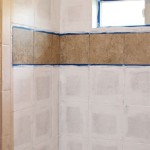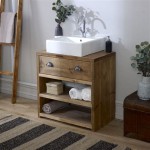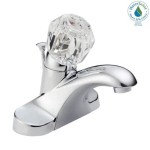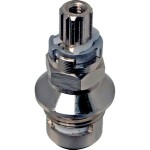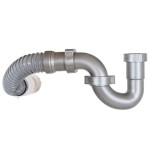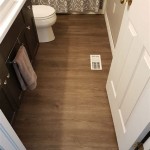Oval or Rectangular Undermount Bathroom Sink: A Comprehensive Guide
The selection of a bathroom sink is a critical decision influencing both the functionality and aesthetics of the bathroom. Undermount sinks, known for their sleek, seamless appearance and ease of cleaning, are a popular choice. Within the realm of undermount sinks, two primary shapes dominate: oval and rectangular. Differentiating these shapes goes beyond mere visual preference; understanding their respective advantages and disadvantages is essential for informed decision-making.
This article provides a comprehensive guide to oval and rectangular undermount bathroom sinks, exploring their design considerations, functional aspects, installation nuances, and suitability for various bathroom styles. The focus remains objective, presenting information to empower the reader to select the sink shape that best aligns with individual needs and preferences.
Design Considerations: Aesthetics and Space Utilization
The visual impact of a sink shape is a significant factor in bathroom design. Oval undermount sinks are characterized by their soft, rounded edges, contributing to a more traditional or transitional aesthetic. The curvature of the oval shape can create a sense of fluidity and relaxation, often complementing softer color palettes and intricate bathroom details. This shape typically works well in bathrooms aiming for a classic or vintage feel.
Conversely, rectangular undermount sinks feature clean, straight lines, projecting a modern and contemporary style. This angular design lends itself well to minimalist bathrooms, emphasizing functionality and simplicity. The sharp lines of a rectangular sink can create a sense of order and sophistication, particularly when paired with geometric tiles and sleek fixtures. The choice between oval and rectangular hinges on the desired design ambiance and the overall style of the bathroom.
Space utilization is another crucial design consideration. Rectangular sinks, particularly narrower models, can be advantageous in smaller bathrooms or powder rooms where maximizing counter space is paramount. Their linear form allows them to be positioned efficiently along a countertop, leaving more room for toiletries and other necessities. Some rectangular sink designs maximize the interior basin space compared to an oval sink with similar external dimensions.
Oval sinks, while generally space-efficient, might occupy a slightly larger footprint due to their curved sides. However, the rounded edges can make them feel less imposing, especially in tighter spaces. The choice between the two shapes, thus, requires careful consideration of the bathroom's dimensions and the desired balance between sink size and countertop space.
Furthermore, the depth of the sink basin influences its practicality. Deeper basins prevent splashing and accommodate larger items. Both oval and rectangular sinks are available in various depths, allowing for customization based on individual preferences and water usage habits. The surrounding countertop material and design also play a vital role in the overall aesthetic. For instance, a light-colored countertop can enhance the visual impact of a dark-colored sink, while a textured countertop can add depth and interest to a simpler sink design.
Functional Aspects: Cleaning, Maintenance, and Practicality
Beyond aesthetics, the functionality of a bathroom sink is paramount. Undermount sinks, in general, offer a distinct advantage in terms of cleaning and maintenance compared to drop-in sinks. The seamless transition between the sink and the countertop eliminates the rim that can trap dirt and grime, simplifying the cleaning process. A simple wipe-down is typically sufficient to maintain the cleanliness of the countertop surface.
Oval sinks, with their rounded interior surfaces, often allow for easier water flow and drainage. The absence of sharp corners minimizes the accumulation of soap scum and debris in hard-to-reach areas. This characteristic can contribute to a more hygienic sink environment and reduce the frequency of thorough cleaning.
Rectangular sinks, while offering a modern aesthetic, may require slightly more attention during cleaning. The sharp corners and edges can sometimes present challenges in accessing and removing accumulated grime. However, with proper cleaning tools and techniques, maintaining a rectangular sink is still relatively straightforward.
The practicality of a sink also depends on its size and depth relative to the user's needs. A larger sink basin with a greater depth is better suited for tasks such as handwashing and rinsing larger items. Conversely, a smaller sink might be sufficient for basic hygiene routines in a guest bathroom or powder room.
The placement of the faucet is another crucial functional consideration. With undermount sinks, the faucet is typically mounted on the countertop, providing flexibility in selecting a faucet style and height that complements the sink's design. Adequate space around the faucet is essential for comfortable use and prevents water from splashing onto the surrounding countertop.
The material of the sink also influences its durability and maintenance requirements. Common materials for undermount sinks include vitreous china, porcelain, stainless steel, and cast iron. Each material offers different properties in terms of resistance to staining, scratching, and chipping. Choosing a material that aligns with the user's lifestyle and cleaning habits is essential for long-term satisfaction.
Installation Nuances and Compatibility
Installing an undermount sink requires careful attention to detail and adherence to manufacturer specifications. Unlike drop-in sinks that simply rest on the countertop, undermount sinks are attached to the underside of the countertop using clips and adhesives. This installation method ensures a seamless and secure connection between the sink and the countertop.
The compatibility between the sink and the countertop is crucial for a successful installation. The countertop material must be strong enough to support the weight of the sink and the water it contains. Common countertop materials suitable for undermount sinks include granite, marble, quartz, and solid-surface materials.
The countertop cutout for the sink must be precise and accurately sized to match the dimensions of the sink. A poorly executed cutout can result in gaps or uneven edges, compromising the aesthetic appeal and potentially leading to water leakage. Professional installation is often recommended to ensure a flawless and watertight seal.
The faucet placement must be carefully planned during the installation process. The faucet holes must be drilled in the countertop prior to installing the sink. The spacing and size of the faucet holes must be compatible with the chosen faucet model. Improperly placed faucet holes can result in alignment issues and difficulty in connecting the faucet to the water supply lines.
The plumbing connections for the sink drain and water supply lines must be properly installed and sealed to prevent leaks. The drainpipe must be aligned correctly to ensure proper drainage. The water supply lines must be securely connected to the faucet and the shut-off valves. Regular inspection of the plumbing connections is recommended to identify and address any potential leaks promptly.
The weight of the undermount sink can also be a factor during installation. Larger and heavier sinks require additional support to prevent sagging or damage to the countertop. Reinforcing the cabinet beneath the sink may be necessary to provide adequate support. The installation instructions provided by the sink manufacturer should be carefully followed to ensure a safe and secure installation.
Finally, consideration should be given to the accessibility of the plumbing connections for future maintenance or repairs. Adequate space should be left around the sink and the plumbing connections to allow for easy access. This is particularly important for sinks located in tight spaces or enclosed cabinets. Planning for future accessibility can save time and effort during subsequent maintenance procedures.

Rectangular Vs Oval Bathroom Sink Pros Cons Kingston Brass

Horow 19 11 16 In Oval Porcelain Ceramic Undermount Bathroom Sink White With Overflow Drain Hr R5040d The Home Depot

Horow 21 5 8 In Rectangular Glazed Ceramic Undermount Bathroom Vanity Sink White With Overflow Drain Hr S5540d The Home Depot

Kraus Elavo 19 1 4 In Oval Porcelain Ceramic Undermount Bathroom Sink White With Overflow Drain Kcu 272 The Home Depot

Oval Vs Square Bathroom Sinks

Horow 23 5 8 In Rectangle Undermount Bathroom Sink White With Overflow Drain Hr S6039d The Home Depot

Kohler Caxton White Undermount Oval Traditional Bathroom Sink 19 25 In X 16 The Sinks Department At Com

Bathroom Dilemma Rectangular Or Oval Sink Yay Nay

15 9 16 L X 13 W White Oval Undermount Porcelain Bathroom Sink With Overflow

Kraus Elavo 16 3 4 In Oval Porcelain Ceramic Undermount Bathroom Sink White With Overflow Drain Kcu 273 The Home Depot
Related Posts

